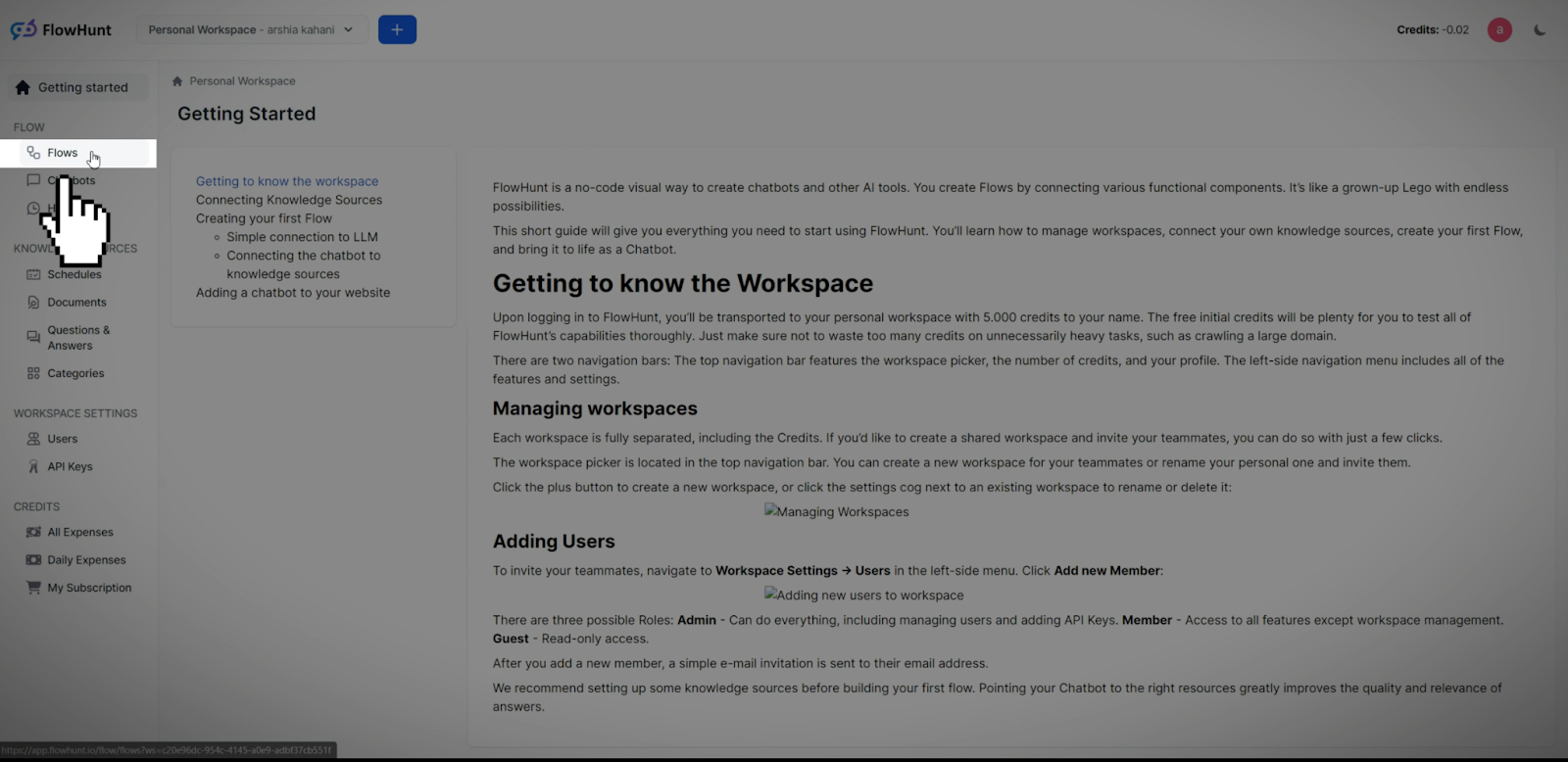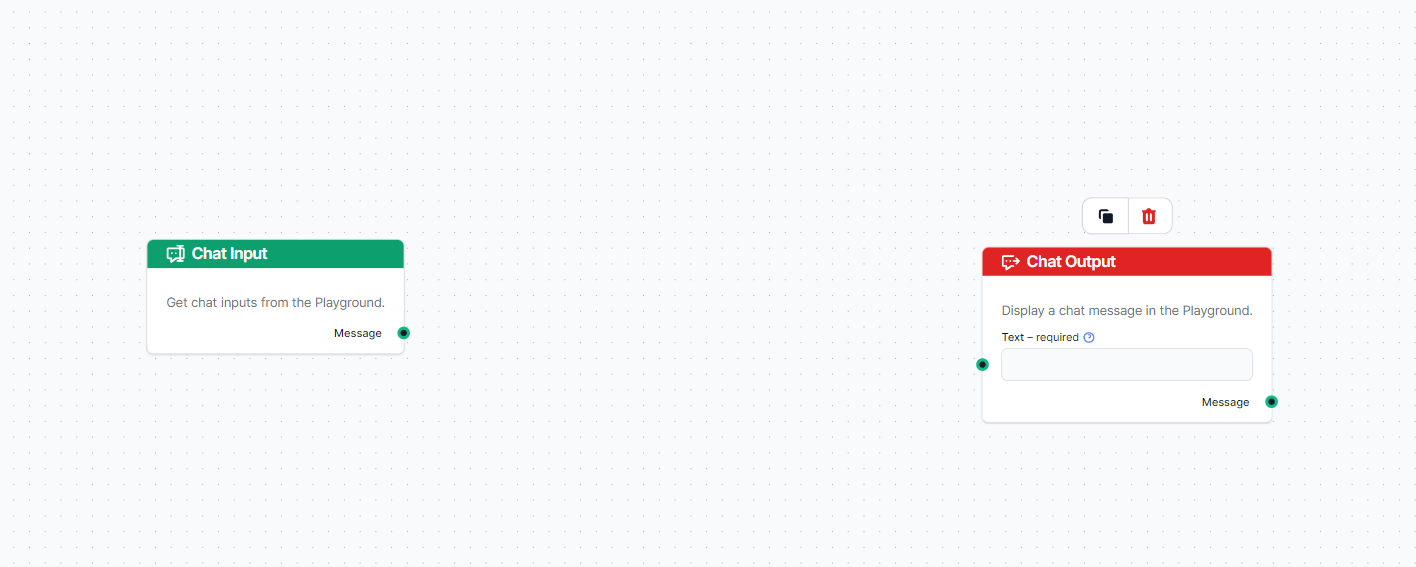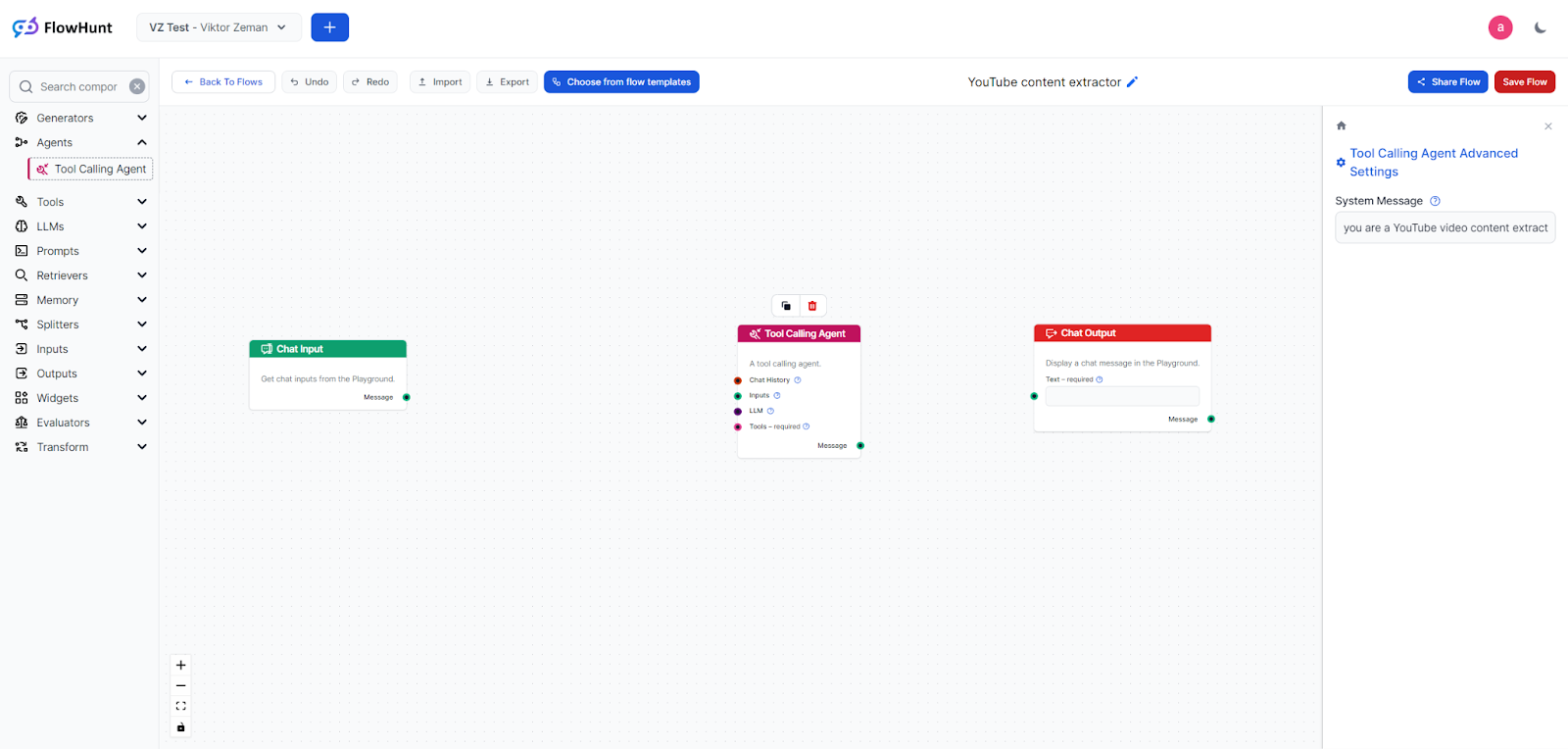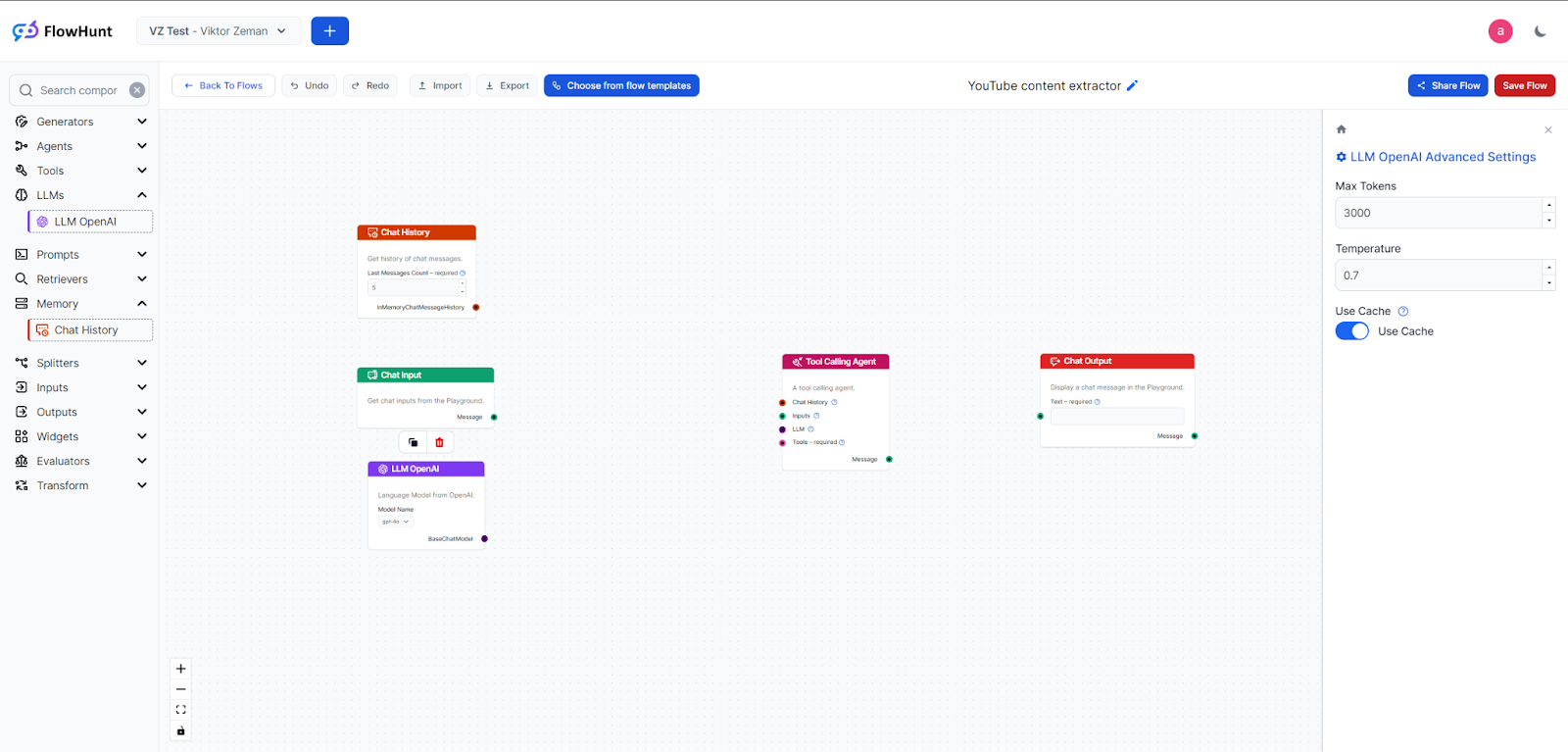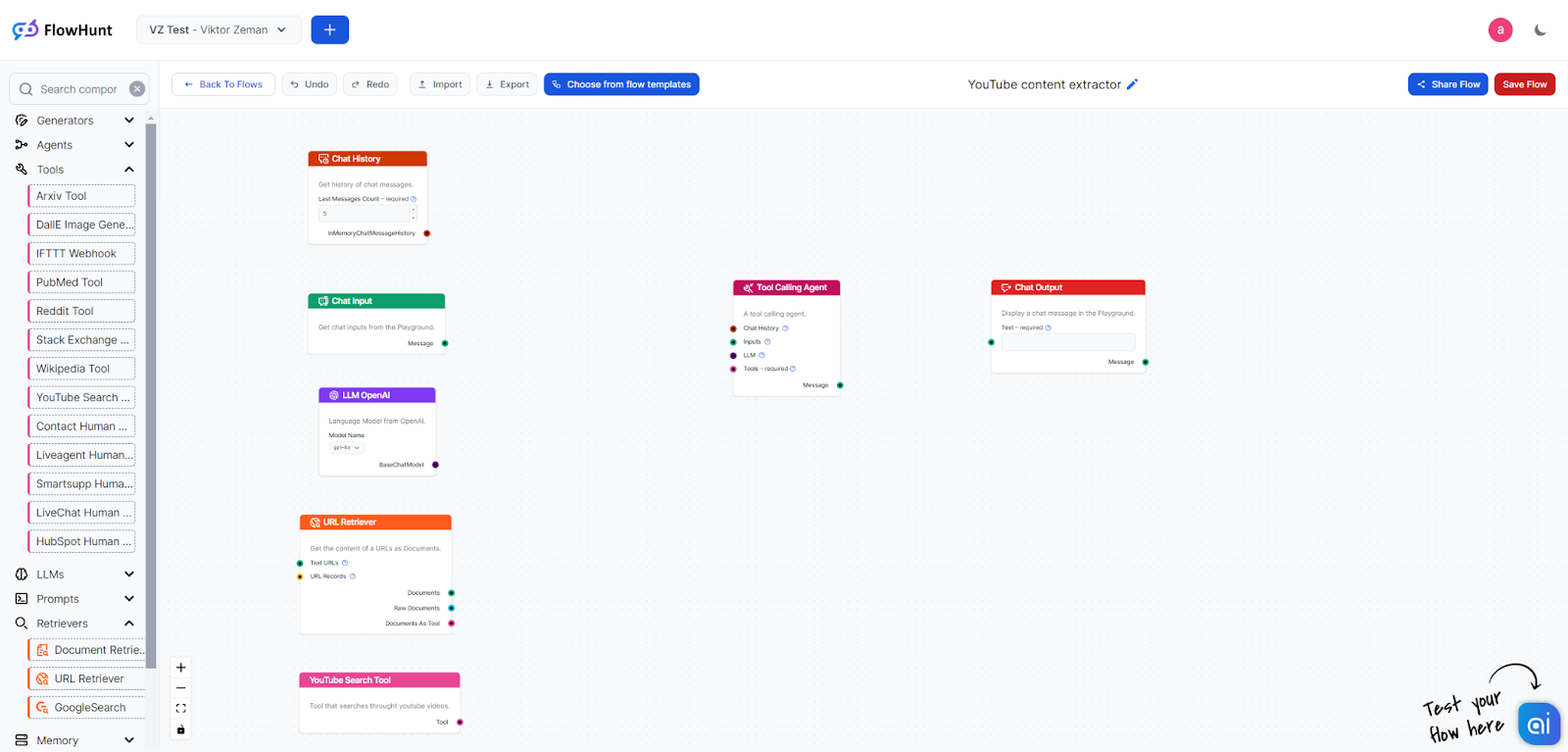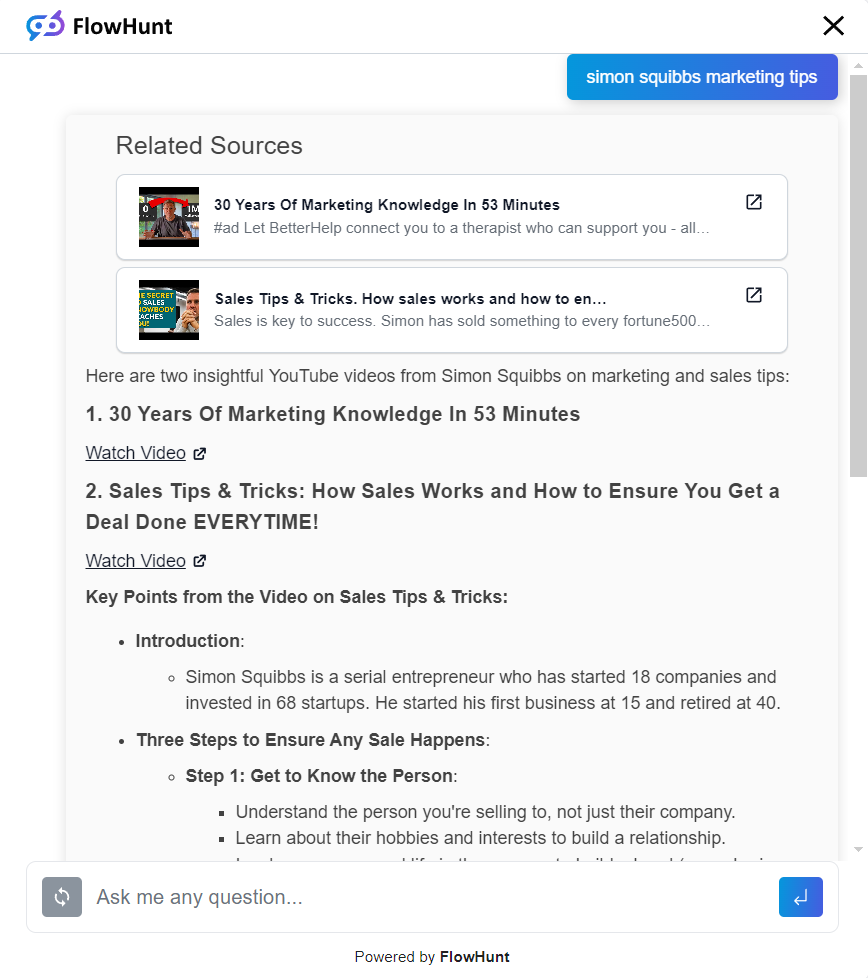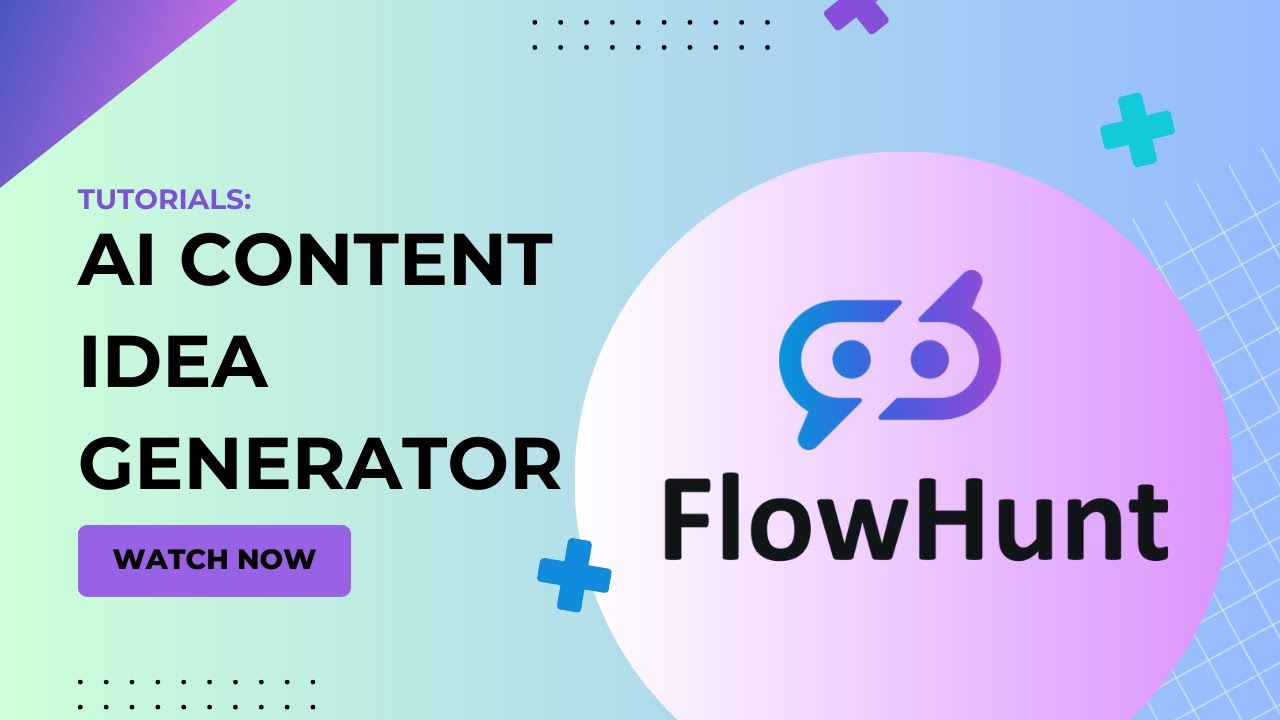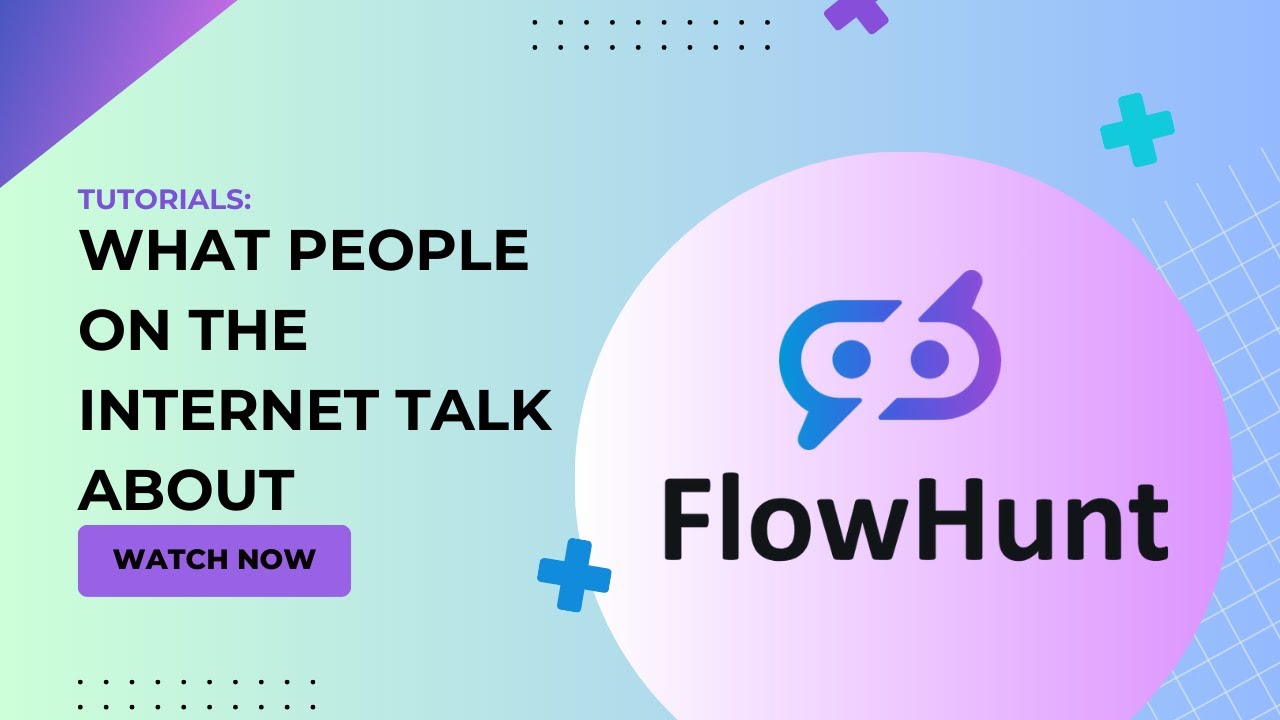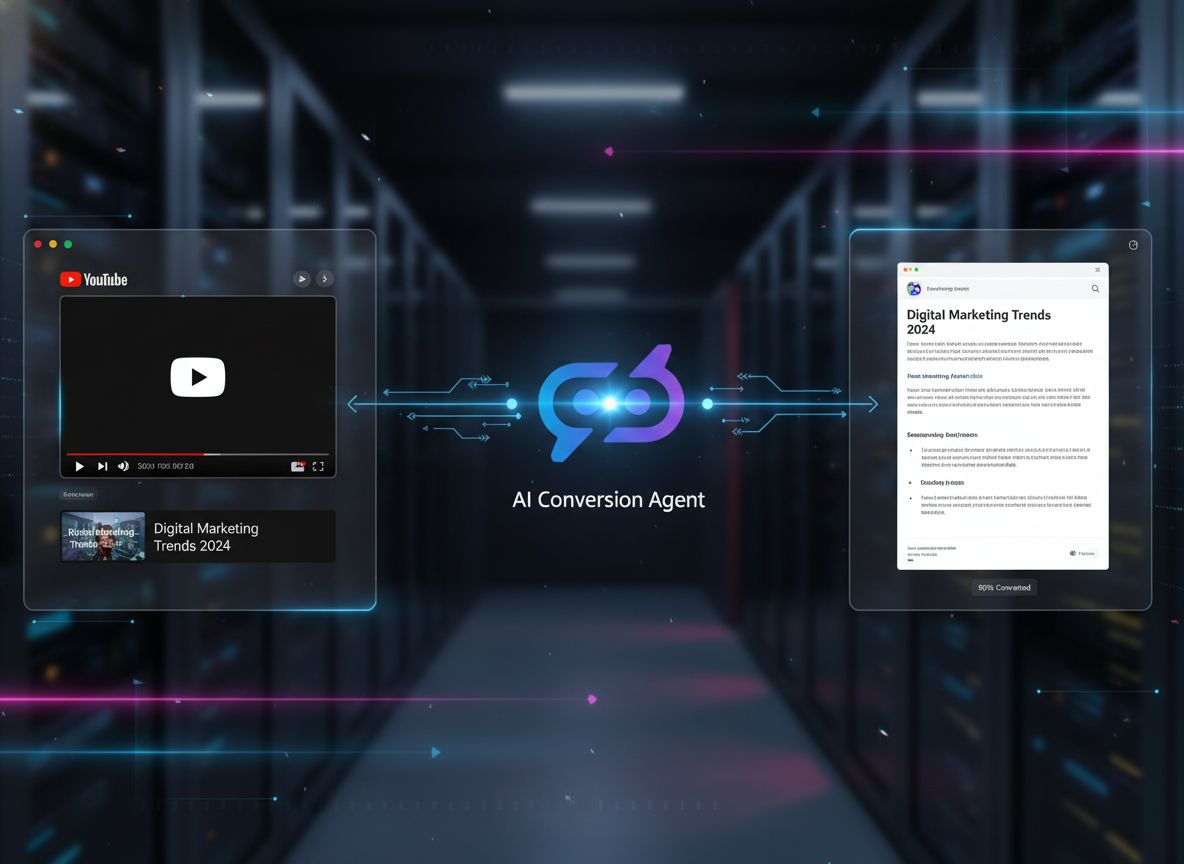
Turn YouTube Videos Into Blogs Using AI Automation
Learn how to automatically convert YouTube videos into SEO-optimized blog posts using AI agents, FlowHunt, and intelligent workflow automation. Discover the com...
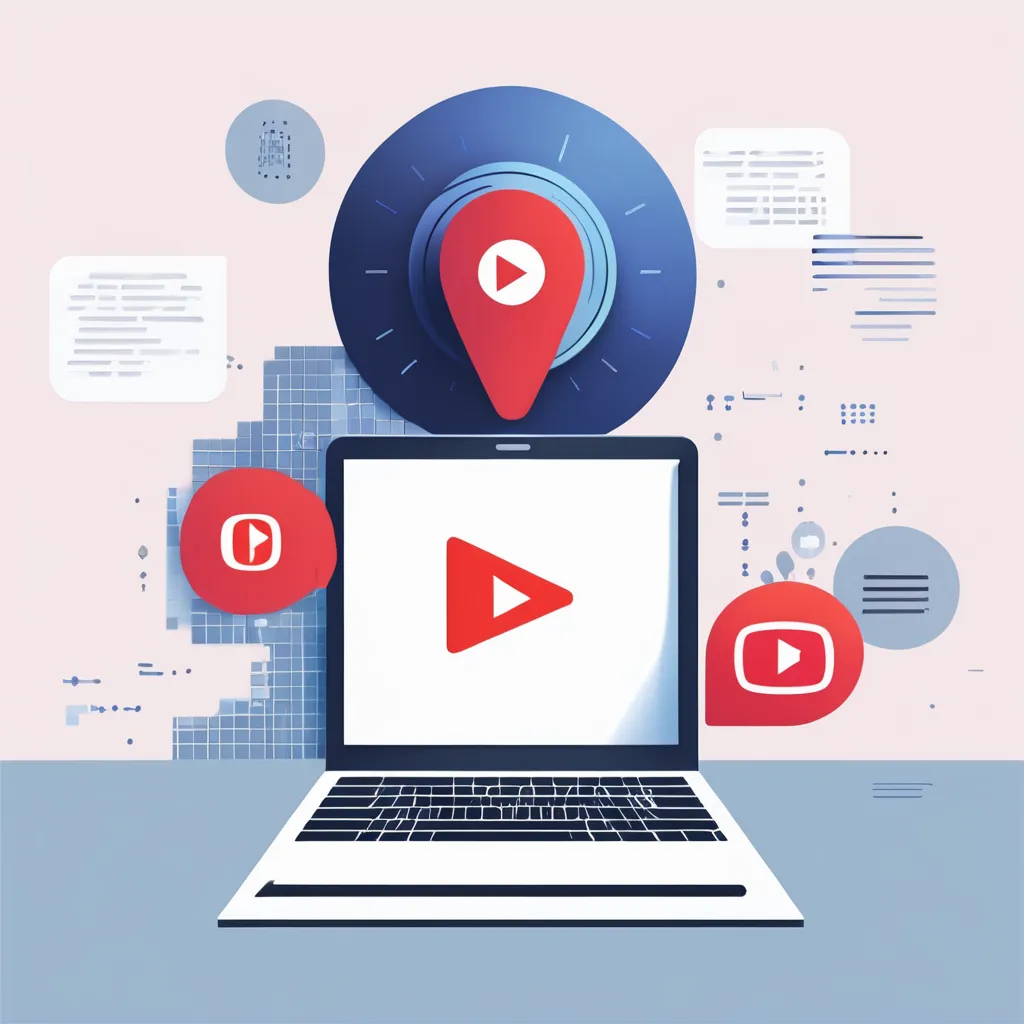
Quickly extract actionable key points from YouTube videos using FlowHunt’s no-code AI agents. Get summaries, transcripts, or detailed insights in minutes.
Enter the URL of any YouTube video that contains captions and let FlowHunt do the magic for you:
An AI agent is an entity or system capable of perceiving its environment, processing that information, and taking actions to achieve specific goals or tasks. In this guide, we will use an AI Agent to connect to the YouTube Search tool and extract data from a YouTube link.
Using FlowHunt, we’ll create a chatbot that extracts the essential content from YouTube videos and presents it to you in text format. The best part? You don’t even need to provide a specific link. Just mention a keyword, and our chatbot will automatically search for the top videos on that topic and use them as the source material.
Now we can connect everything together. But we’re not done yet. Since the agent can think, we need to guide its thought process. We’ll do this by providing a specific prompt in the system message compartment. Once we’ve done that, we can start generating extracted content.
Our prompt for this Flow:
You are a YouTube video content extractor. Extract the content using YouTube search tool to find the video and the URL retriever to extract the content. Make sure to present these content as in-depth and detailed as possible
For example, you can ask the chatbot to give you marketing tips from Simon Squibb’s videos. It will generate the most important tips from his videos on marketing.
You can fine-tune this process to generate detailed essays about the video or even extract the full transcript. But for now, this is the example we’ll use.
FlowHunt uses AI agents that connect to YouTube’s search and URL retriever tools, automatically finding relevant videos and extracting detailed content, summaries, or transcripts based on your keywords or links.
No, you can simply enter a keyword or topic. FlowHunt's chatbot will search YouTube for top videos on that topic, extract their content, and deliver the key points to you.
Yes, FlowHunt allows you to build custom flows, add optional features like chat history or LLM selection, and tune the prompts to generate detailed essays, transcripts, or concise summaries from YouTube videos.
FlowHunt streamlines the process of extracting key information from long or complex YouTube videos, saving time and effort for professionals, researchers, and casual users alike. The platform is flexible and no-code, making AI accessible to everyone.
Yasha is a talented software developer specializing in Python, Java, and machine learning. Yasha writes technical articles on AI, prompt engineering, and chatbot development.
Effortlessly turn YouTube videos into text summaries or actionable key points with FlowHunt's AI-powered tools. Save hours of manual work and enhance your productivity.
Learn how to automatically convert YouTube videos into SEO-optimized blog posts using AI agents, FlowHunt, and intelligent workflow automation. Discover the com...
Kick the writer's block and get tailored content ideas. Learn how to build your own custom AI Content Idea Generator with FlowHunt, generating unique, trending ...
Short on content ideas or just curious what people on the internet talk about? Try our AI tool to find out and learn how to build your own.
Cookie Consent
We use cookies to enhance your browsing experience and analyze our traffic. See our privacy policy.
